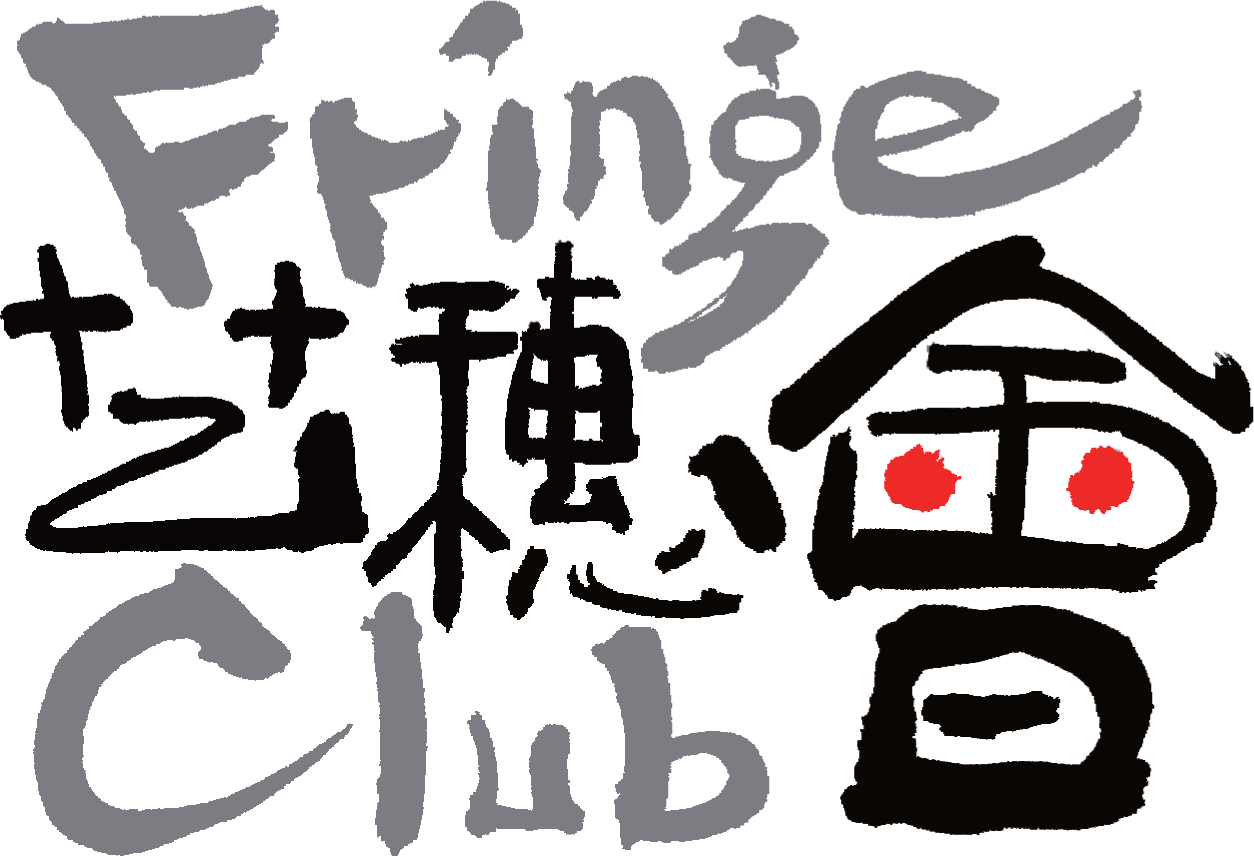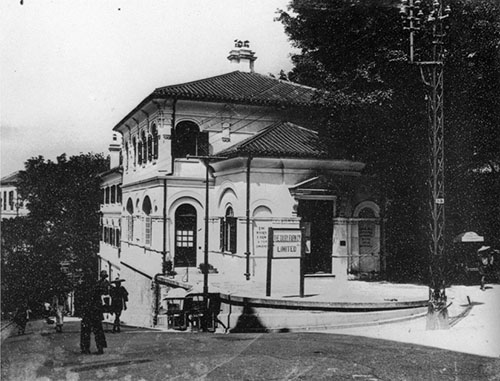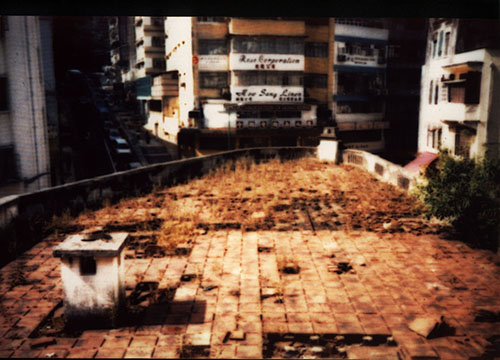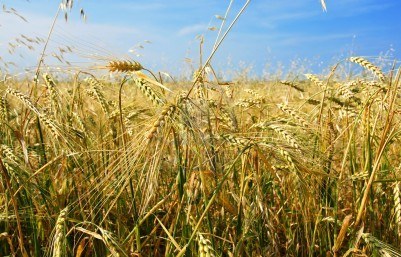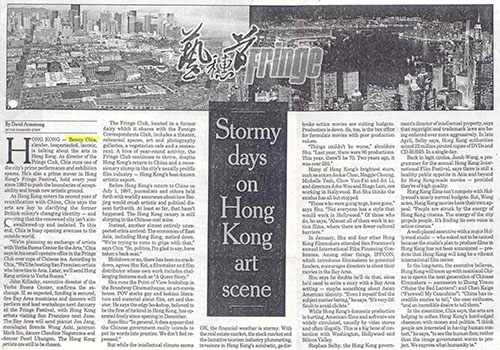- About Fringe Club
- Fringe Evolution
- Vision & Mission
- Board & Management
- Archive
- Fringe Blog
- Jobs
- Contact Us / Visit
Fringe Evolution
In the beginning, before it all happened, there were three things crucial in bringing the Fringe to life. They were:
· The Dairy Farm Depot
· The Working Team
· The Three Chinese Characters
And it all began in the winter of 1983.
At that time Hong Kong was going through a tough patch. The economy took a dive. The property market went bust. The Central District, the CBD of Hong Kong, was strewn with empty offices. No-one seemed to have any appetite to go into new ventures of any kind.
Instead of sitting around looking glum, we looked around for opportunities which came in the form of a disused building -- the old Dairy Farm cold storage depot.
Built in 1892 by a Scottish surgeon who had made it into a successful business by producing and selling milk, and other dairy products to other European settlers, Dairy Farm depot became a well-known landmark in Hong Kong. Then in the early 1970's, Dairy Farm (the Company) traded it for some land in the New Territories with the Government. After that, it was boarded up, on course for demolition.
Launch--Fringe Festival (1983-1998)
In the week before Christmas in 1983, after 8 years of disuse, we finally got hold of the key to the depot, which has become the location of Fringe Club ever since then. By that time we had just one month to get it ready as a temporary festival club to host the new Fringe Festival, and another month to operate in it. Beyond which, we had no plan.
Our first mission was to name it in Chinese. The name “Fringe Festival” was inspired by Edinburgh Festival Fringe. However, at the time, “Fringe” had not yet existed in the Chinese vocabulary to mean what it does now. We therefore create a new Chinese term to capture its essence. This comes:
· 藝 ngai = Arts
· 穗 seoi = the bristle like growth from the kernel of a cereal plant
· 節 zit = festival
These three self-initiated characters embody the spirit that Edinburg Festival Fringe upholds and encourages, where art can be free to grow wildly as cereal plant.
Nowadays 藝穗節 (ngai seoi zit) is commonly used to describe a fringe-festival-type of event.
We had our eyes on the old Dairy Farm building because it's in a good location (right on the fringe of Central), and has sufficient ceiling height for conversion into art spaces. The only catch was, the building was in an advanced state of decay.
At the time, there were only me and my young secretary Emma. So I went on the radio to call for volunteer helpers, romanticising about the whole thing. Like miracle workers, they turned up in droves, eager to take part in our adventure. Some of the helpers stayed on, and one until this day, known to us all as Cat.
The Fringe Festival went from 1983 to 1997. As an open platform for the arts, it has come to stand for Freedom of Expression.
Transform--City Festivals (1999-2010)
The year that we brought the curtain down on the Fringe Festival was also the year of the handover of Hong Kong by Britain to China in 1997. After that there was a palpable loss of interest in Hong Kong as a cultural destination because there were surprisingly no drastic incidents resulted from the handover.
In the aftermath, the Fringe Festival had to change its game, facing a big drop in the number of acts, especially those coming from overseas. The beauty of a festival fringe is that it gives the audience more than they can choose. If this does not happen, it will be like a fun fair with only a few game stalls open, rather pathetic. So we would either go under or come up with a new and viable concept to replace the old one. That was how the City Festival, an arts festival with a focus on urban culture, has emerged.
And we believe that, if the arts are to reflect or even spearhead change in our society, then this new festival must be relevant to our times. It must also have a meaningful, participatory, and even playful relationship - places, people and technologies - with our own city and cities in general.
The modern city has many layers. It is also rich in contents. The City Festival sets out to tap it for ideas, themes and trends. And to get to know our own city better, we look at how other cities live, work and play, from the perspectives of arts and culture. This is how the idea of the Spotlight City was conceived.
Spotlight City (1999-2015)
Spotlight City has become the signature programme of the City Festival, and also a platform for cultural exchange for Hong Kong. Running for over 10 years, the following cities have been featured: San Francisco 1999, Melbourne 1999, Honolulu 2000, Bergen 2001, Vienna 2002, Seoul 2005, Singapore 2006, Ho Chi Minh City 2007, Kaiping 2009, Guangzhou 2010, Penang 2014 and Singapore 2015. Particularly, Spotlight Hong Kong, a broad-theme showcase of Hong Kong artists' works, has been spawned. So far it has toured in Seoul, Singapore, Ho Chi Minh City and Penang.
At this stage of its evolvement, it has become clear to us that the City Festival can be cast in a mobile mode to become Spotlight City. Just as communication technologies have allowed us unprecedented mobility, a festival such as ours can be staged almost anywhere.
Once the logistics have been ironed out, there is no real site restriction. We could take to the road as troubadours or nomads did in olden days. They can move from one location to the next, creating theatres and art pieces of meaning, while putting up resistance to conformity.
Since 2011, our venue has been partially shut down for a major overhaul. Taking advantage of this, we have gone nomadic with programmes designed for touring. And we have brought shows to:Kaiping, Wuyi, Bangkok, Tokyo, Taipei, Seoul, Shanghai Expo, Jujiajiao , Venice Biennale and Taipei Hong Kong Week.
Reinvent--Festival without walls (2011-present)
To take this one step further: if we don't have to tie down to one location, do we have to play to a famine-and-feast cycle, around which conventional arts festivals operate? Technological advancements have changed the way we live, as well as our cultural consumption patterns. These days, the trend is to consume less, and in smaller portions. In face of the compression and fragmentation of time in the way we organise our lives, we may also need to rethink how a festival should be, to use a high-tech word, re-engineered.
Keeping up with the evolving ways of consuming art, we have subsequently launched the Festival Without Walls, with a special regard to Andre Malraux's concept of Le Musee Imaginaire. It transcends self-limiting constraints and goes beyond the physical events. We want to search for a new structure of form, through which we can create a relationship between musicians and audience, artists and their community, Hong Kong and other cities, you and your ideas. Instead of being overwhelmed by the sheer volume of it, programmes and shows are arranged throughout the year. Pace it such that both the presenter and the audience can savour the experience.
At this moment, we are working on our manifesto by way of reinventing the Fringe.
"If you do not change direction, you may end up where you are heading." -- Lao Tzu
In the beginning, before it all happened, there were three things crucial in bringing the Fringe to life. They were:
· The Dairy Farm Depot
· The Working Team
· The Three Chinese Characters
And it all began in the winter of 1983.
At that time Hong Kong was going through a tough patch. The economy took a dive. The property market went bust. The Central District, the CBD of Hong Kong, was strewn with empty offices. No-one seemed to have any appetite to go into new ventures of any kind.
Instead of sitting around looking glum, we looked around for opportunities which came in the form of a disused building -- the old Dairy Farm cold storage depot.
Built in 1892 by a Scottish surgeon who had made it into a successful business by producing and selling milk, and other dairy products to other European settlers, Dairy Farm depot became a well-known landmark in Hong Kong. Then in the early 1970's, Dairy Farm (the Company) traded it for some land in the New Territories with the Government. After that, it was boarded up, on course for demolition.
